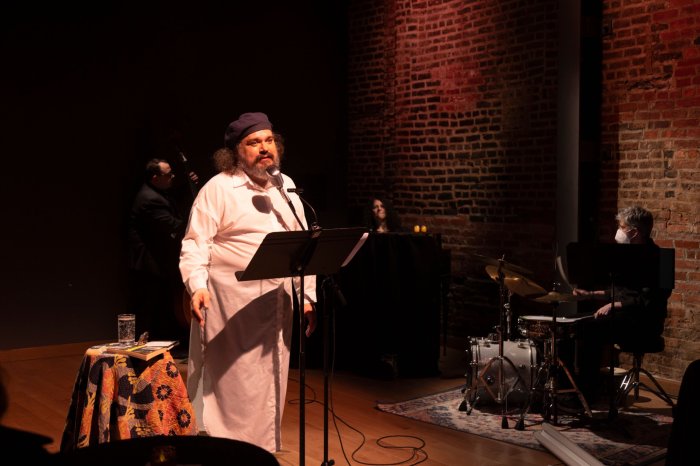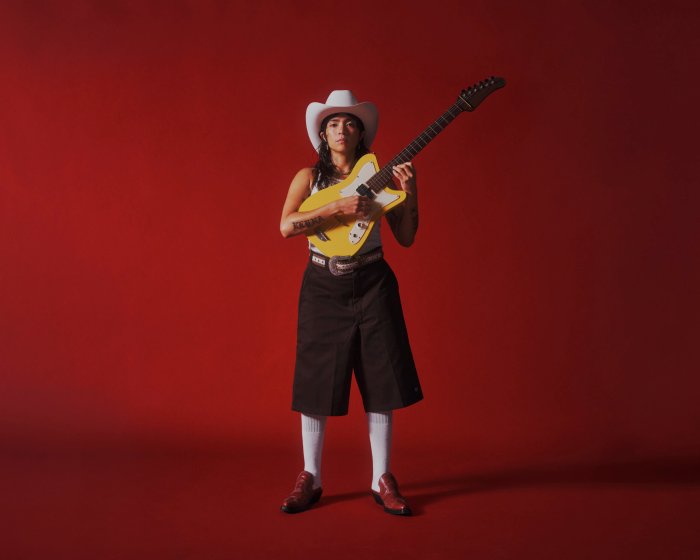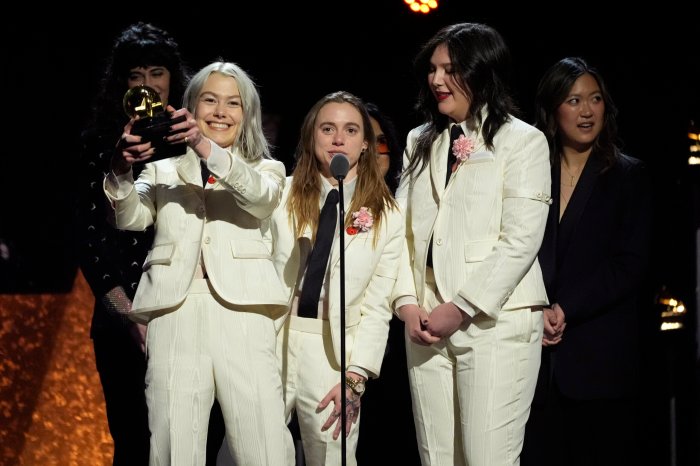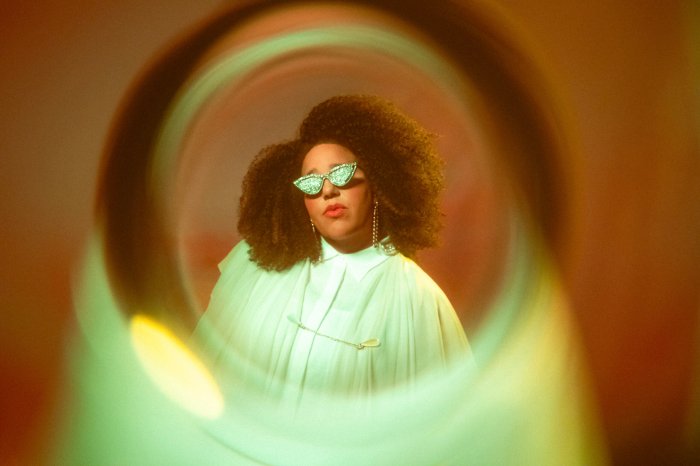Director and music historian Ken Bloom bandleader Vince Giordano are bringing back Cole Porter’s 1928 “The Ambassador Revue” at Town Hall on June 27. | DAVID NOH
BY DAVID NOH | No one brings the intensity to confabs that lovers of musical theater manage when they get together. And my recent meet-up with essential bandleader Vince Giordano and director/ producer/ historian Ken Bloom proved an absolute Broadway nerd-fest. The two guys have collaborated to revive Cole Porter’s 1928 “The Ambassador Revue” at Town Hall on June 27 (thetownhall.org), with a cast that includes Amy Burton, Jason Graae, Tom Wopat, Catherine Russell, and Anita Gillette. The show was originally only done in Paris and then fell into obscurity, with the music thought to be completely lost. When these gents told me that I probably wouldn’t know any of the songs, I said, “Try me.”
“The Ambassador Revue” gets an unearthing; cabaret enchantress Carole J. Bufford
Giordano responded, “Well, maybe the best-known one would be ‘Pilot Me’” — which, of course, I knew from the album “Bobby Short Loves Cole Porter,” which obsessed me in high school. “We’re obviously talking to the right person,” Bloom laughed, and we were off. “Apart from that,” Giordano said, “There were two songs recorded by Ben Bagley, but that’s it. If you look at Bob Kimball’s book, ‘The Complete Lyrics of Cole Porter,’ it says right at the top that none of the music has survived. But guess what? I found it after searching all over Europe and the Library of Congress. Ken even called [popular band leader] Fred Waring’s archives at State College in Pennsylvania, and he must have gotten the wrong person on the phone because they said, ‘It’s not here.’ So I went back and found another person, gave him a list of song titles, and he said, ‘Yeah, we have those.’ “You should have heard me screaming on the phone! Fred was an astute businessman who’d spent all that money for these songs, so he wasn’t going to get rid of them. No one has seen them since 1928, and I even found a Porter song written for the show but not used, which he orchestrated, and we are putting it in the show. The Porter estate and the Library of Congress had no knowledge of any of this. Waring went to Penn State and left everything to them, even his steamer trunks with booze bottles still in them. It was a party band.” Bloom added, “This all really started with [New York City Opera soprano] Amy Burton, who wanted to do a Porter club act, and it got into my and Bob Kimball’s head that no one knows anything about ‘Ambassador.’ I called a friend, Christopher Mirabeau, in Paris, who worked for Universal, which bought Salabert, the original publisher of the music, and he went to the archives and found half of the piano sheet music, just very simple with the lyrics but no band arrangements. Christopher hired Broadway arranger Larry Blank, and in 2012, we did a Paris concert of what we had. For this New York show, I said to Vince that we had to do it with a real 1920s sound, not Broadway, so Vince was going to write the orchestrations but said, ‘Let’s give it one more crack,’ and that’s when he found the stuff at the Waring archives.” “I hit a home run and to tell the truth, I never could have made it as good as what we found,” Giordano continued. “These are originals, which Porter approved and worked on, with the imagination and whole spirit of the 1920s here. It’s a real sound, not that cliché boop-boop-a-doop, and we don’t really know the sound except on old scratchy 78s where you can’t differentiate the instruments. We’re going to have a 16-piece orchestra.” Bloom said, “The Ambassador Revue” was a big production, and “all these Americans came to Paris to do it. The star was Morton Downey and the choreographer was Bobby Connolly, who later did ‘The Wizard of Oz.’ George Gershwin’s sister, Frances, was in it and, in the middle of the show, she sang a Gershwin specialty number we have a Xerox of, with original orchestrations. George was there at the time writing ‘An American in Paris,’ and on opening night, he accompanied her!” These musical detectives have so far only managed to dig up one photo from the original production, but feel that some Pathé newsreel footage of the show may exist. “It was such a big success that there was a second edition, for which Porter wrote the song ‘Looking at You,’ which we are including,” Giordano said. “He was at the beginning of his career with just one Broadway flop to his name, so this really kicked off his career. He did the show ‘Paris’ shortly after, and word got out that we’d better pay attention to this fellow who’s writing incredible things. Irving Berlin was very instrumental in getting him back to the States.” Porter’s alma mater, Yale, is thrilled over these findings, which will all be donated to their collection, and there are plans for a Kickstarter campaign to CD-preserve the show. “We’re also going to have four tap dancers, with Randy Skinner choreography,” Giordano said. “It’s really amazing that you can find something new from Porter and Gershwin in 2014.” Bloom added, “And it’s not only historic, it’s really good. We’ve all seen so many lost things which get found and now you know why they were lost — but not this!”
Carole J. Bufford burns down the house with her show “Shades of Blue” at the Metropolitan Room. | CAROLEJBUFFORD.COM
I asked Giordano if there were any contemporary singers whom he enjoyed listening to and the first name out of his mouth was Carole J. Bufford, with whom he’s worked. I was really struck by her talent at the 54 Below concert of Liza Minnelli’s show, “The Act,” in which Bufford killed on “City Lights,” cannily working the entire room to sell this exhausting belted anthem. Coming up for Bufford is a free concert, “Speakeasy,” at Kingsborough Community College, with Giordano and his Nighthawks (July 19; onstageatkingsborough.wordpress.com), but currently, she is doing her show “Shades of Blue” at the Metropolitan Room (metropolitanroom.com), and a smarter, more musically varied one I’ve yet to see. Bufford sang two songs off what I call my DNU (Do Not Use) list — overdone pieces I never want to hear again — the warhorse “The Man That Got Away” and “Summertime” a la Janis Joplin. She utterly redeemed both with her lovely, chameleonic voice, interpretive skill, and serious musicality. This slip of a gamine — and a white girl at that — has some serious blues and soul in her being and displayed some hardcore chops on Bessie Smith’s amazing “Send Me to the ‘Lectric Chair.” From Lincolnton, Georgia (“a teeny one-stoplight town near Augusta”), Bufford told me, “I would work as the cashier in my dad’s hardware store after school and never wanted to do anything else but sing. My parents found this piece of paper from school when I was seven saying that what I wanted to be when I grew up was a singer in a smoky nightclub. Clearly I watched too much ‘Cabaret’ and Liza — wildly inappropriate — but I was obsessed by the ‘Mein Herr’ number. My family loved music and I listened to Judy, Liza, Dinah Washington, and Della Reese, one of my top favorites. She has such an odd tone, really captivating, which pulls you in. “I went to this great musical program at Ithaca College and came here right after graduation in 2004. I immediately booked the tour of ‘Junie B. Jones’ for almost a year, came back, and did it at the Lucille Lortel here, then ‘Peter Pan’ in Atlanta, Fringe shows, and Terrence Mann’s ‘Romeo and Juliet’ at the New York Musical Theatre Festival. “I also did some readings, but about five years ago I was feeling artistically unsatisfied so I entered the Metro Stars cabaret contest at the Metropolitan Room. I had this arrangement of ‘Folsom City Blues,’ which I wanted to sing in public, but didn’t know much about this world. Where I’m from, cabaret meant stripping. I threw myself into the contest and did well, and that first night I met [the late] Donald Smith, head of the Cabaret Convention, and he said, ‘I want you to sing that song in this year’s convention,’ and that catapulted me into the world of cabaret. “I love artistically challenging myself to put together my own show, to have that creative control. As an actress I was being sent to the wrong jobs — I just don’t have an ingénue-y voice nor do I want to. I’m not wild about contemporary musicals — that crazy high belting is not my thing. I like big juicy belts! “So much thought went into this show and I’m glad you thought that enough of my personality came through without me talking about myself. I really don’t like to on stage, would rather you get to know who I am through the music. But it was tricky picking songs, as the blues can get very monotonous, with the same sound and similar situations. We were aware of trying to find some variance there, as with ‘The Man That Got Away.’ The blues roots are there because Harold Arlen [whom Duke Ellington once described as the blackest white man he ever knew] so often had an undercurrent of it in his work. You want to do justice to the song and Judy Garland’s version is lauded on high as it should be. A carbon copy doesn’t work because she does it way better. A great lyric — I never get tired of it — and I agree with you that it is the greatest movie musical moment of all time, another one I saw way too young as a child.” Bufford says that she is the first artist to be exclusively represented by tireless producer/ impresario Scott Siegel: “We started the show by emailing song titles back and forth. He’s been wonderful for me and my career, and a good friend. I met him at the Metro Stars when I sang ‘Gimme a Pigfoot and a Bottle of Beer’ and ‘Old Man River.’ He said, ‘I love you and I’m putting you in one of my shows.’” Bufford has really found herself in cabaret and said, “I had a lot of trouble in college with people who kept trying to make me sound like Broadway. One of my professors got so frustrated that he said, ‘Carole! You either do what I’m telling you to do and get cast constantly on Broadway, or keep doing what you’re doing and have drag queens imitating you!’ And I was like, ‘Which do you think I would prefer? Do you know me at all? Come on!’” With the tragic demise of beloved City Opera, smaller companies are happily jumping into the breach and On Site Opera’s production of Rameau’s “Pygmalion” was a complete delight. The brainstorm of artistic director Eric Einhorn, his choice of Madame Tussauds for its setting was nothing short of genius, with the waxen likenesses of Kim Kardashian, Julia Roberts, and Robin Williams playing an ineffably organic and apropos part in the rococo antics. The singers were charmers, everyone of them, and Jordan Isadore’s choreography was enchanting. My favorite scene in the screwball comedy classic “The Awful Truth” is when, at a musicale where Irene Dunne is exquisitely singing “Serenata,” Cary Grant’s chair disruptively collapses under him. Who knew that I would be in a re-enactment when the same thing happened to me in the middle of the opera? Happily, the Tussauds staff was on it in a trice, with a new chair provided and the red wine I’d spilled mopped up, as the performance continued seamlessly. Embarrassing, yes, but the staffs of both museum and On Site were incredibly caring and apologetic afterwards. Result: I probably have a lifetime pass to the museum, which is a total hoot and a selfie-taker’s paradise. I screamed at the Dalai Lama, gave Presidents Reagan and Bush Jr. the finger, and laid my tired head on Princess Diana’s shoulder. Contact David Noh at Inthenoh@aol.com, follow him on Twitter @in_the_noh, and check out his blog at http://nohway.wordpress.com.



































